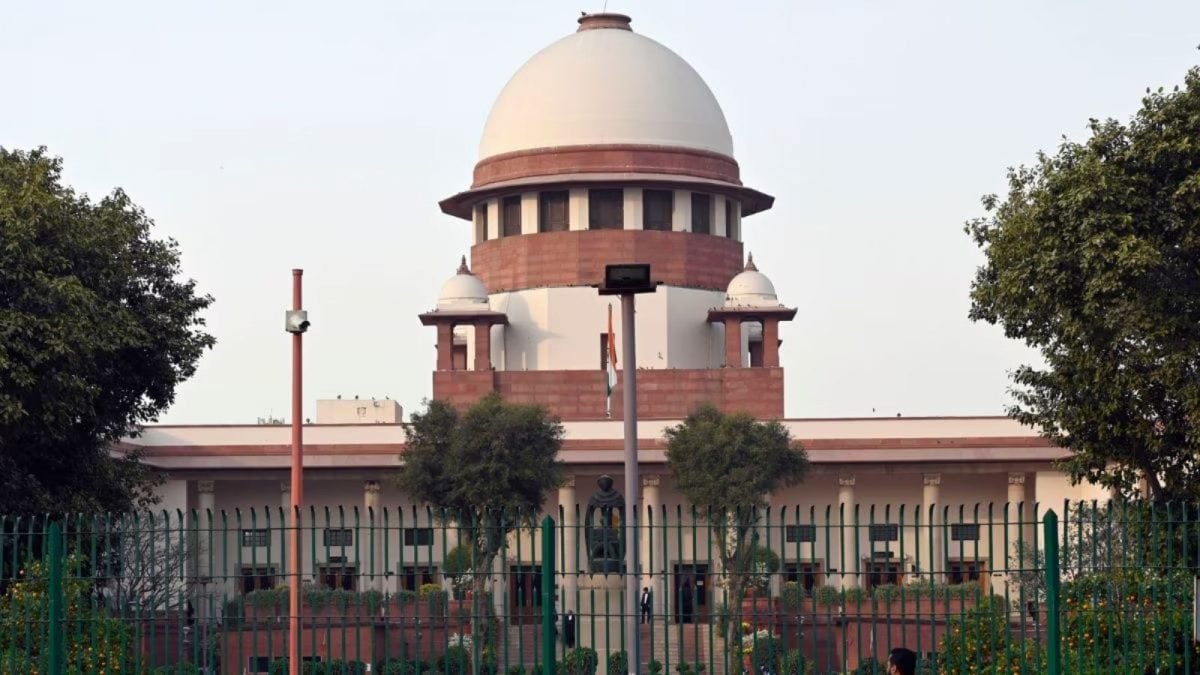Last Updated:
The court noted multiple weaknesses in the prosecution’s case

The bench of Justices Sandeep Mehta and Joymalya Bagchi found no perversity in the Rajasthan High Court’s verdict and held that the prosecution failed to establish the accused’s involvement beyond a reasonable doubt. File pic/PTI
The Supreme Court on September 26 dismissed appeals filed by the Rajasthan government challenging the acquittal of Hemlata and Narpat Choudhary, along with Bhanwar Singh, in the 2006 murder of Suresh Sharma.
Recommended Stories
The bench of Justices Sandeep Mehta and Joymalya Bagchi found no perversity in the Rajasthan High Court’s verdict and held that the prosecution failed to establish the accused’s involvement beyond a reasonable doubt.
The bench, relying on the precedent set in Babu Sahebagouda Rudragoudar v State of Karnataka (2024), observed, “There exist no valid grounds that would justify upsetting and reversing the acquittal of the respondents. On careful consideration of the evidence and materials available on record, we find no infirmity or perversity in the impugned judgment and order dated December 14, 2011, warranting interference.”
The case arose from the death of Suresh Sharma, who was allegedly strangled at Hemlata’s residence following purported disputes and conspiracies involving land issues and personal grievances. The prosecution had claimed that professional killers from Uttar Pradesh were hired, allegedly with the knowledge of the accused, and that the victim’s body was later transported in a Maruti van owned by Narpat Choudhary.
However, the court noted multiple weaknesses in the prosecution’s case. Statements from the deceased’s son, Navneet Sharma, and wife, Meena Sharma, indicated no conflict or tension between the deceased and Hemlata.
The court also highlighted the absence of evidence regarding the alleged intermediary, Dhanesh, or any corroborating call records certified under Section 65-B of the Evidence Act.
Regarding the recovery of a bloodstained chunni from the couple’s residence, the court noted the house remained accessible to anyone before police inspection, and no forensic analysis connected the fabric to Hemlata. The trial court’s reliance on hotel visitor registers, call detail records, and the Maruti van’s condition was similarly found to be inconclusive. The high court had already concluded that these pieces of evidence failed to establish any direct involvement of the accused in the murder or in facilitating the alleged killers.
The Supreme Court affirmed the High Court’s scepticism of prosecution witness Hukum Singh, who delayed reporting having seen the deceased at the accused’s residence. It further emphasised that bloodstains in the Maruti van could not positively link the accused to the crime, and the handwritten call records lacked legal certification and verification.
“The High Court was fully justified in holding that no satisfactory evidence was led by the prosecution to establish the complicity of Hemlata and Narpat Choudhary in the alleged murder of Suresh Sharma. Similarly, there is no sufficient evidence to convict Bhanwar Singh,” the bench concluded.
About the Author

Sukriti Mishra, a Lawbeat correspondent, graduated in 2022 and worked as a trainee journalist for 4 months, after which she picked up on the nuances of reporting well. She extensively covers courts in Delhi.
Sukriti Mishra, a Lawbeat correspondent, graduated in 2022 and worked as a trainee journalist for 4 months, after which she picked up on the nuances of reporting well. She extensively covers courts in Delhi.
October 04, 2025, 02:04 IST
Loading comments…
Read More



